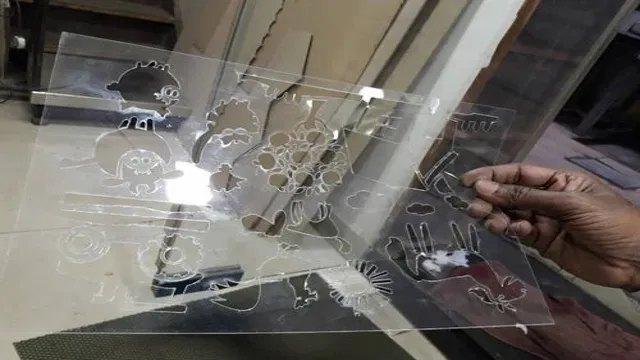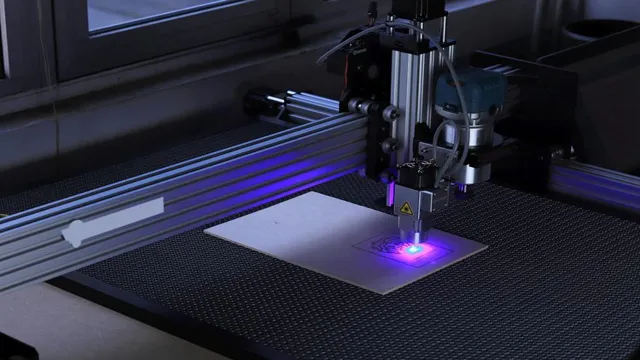Have you ever wondered how laser cutting works and what materials can be cut? One versatile material that can be cut with a laser is polycarbonate. Polycarbonate is a popular thermoplastic material used for a wide range of applications such as automotive parts, eyewear lenses, electronic displays, and more. Laser cutting polycarbonate can be a challenging process, but once mastered, it offers a range of benefits.
In this blog, we will explore laser cutting polycarbonate in detail: understanding the properties of polycarbonate, the different laser cutting techniques, the benefits and limitations of laser cutting polycarbonate, and tips for achieving the best results. So, let’s get started!
What is Polycarbonate?
Polycarbonate is a durable and lightweight thermoplastic material that is commonly used in various industries such as automotive, aerospace, and construction. It is known for its high impact resistance and transparency, making it an ideal material for safety glasses, electronic displays, and machine guards. But, can you laser cut polycarbonate? Yes, you can.
However, laser cutting polycarbonate requires specific equipment and processes. It is essential to use a laser machine with a CO2 laser source and a proper cutting table that prevents direct contact of the material with a metal surface. Polycarbonate also requires lower laser power and slower cutting speed compared to other materials, to reduce the risk of thermal damage and cracking.
Overall, laser cutting polycarbonate is possible, but it requires careful preparation and execution to achieve the desired outcome.
Description
Polycarbonate is a versatile thermoplastic polymer that is commonly used in a variety of industries due to its many benefits. It is a lightweight material that is incredibly strong and impact-resistant, making it a popular choice for applications where durability is crucial. It is also highly transparent, allowing light to pass through with ease, making it ideal for use in safety glasses, windows, and skylights.
Additionally, polycarbonate is resistant to temperature extremes, making it suitable for use in environments that experience extreme heat or cold. It is a great choice for those in the construction, automotive, and electronics industries, among others. Overall, polycarbonate is a reliable and cost-effective solution for a wide range of applications.

Applications
Polycarbonate is a thermoplastic material that is popularly used in various applications, especially in construction and manufacturing. It is a durable, lightweight, and transparent material that has a high impact resistance, making it an ideal choice for many projects. Polycarbonate has become the go-to material for creating windows, skylights, roofing sheets, and even protective shields, due to its high strength and resistance to shattering.
In addition, it can also be used in electronics, automotive parts, and medical devices, among others. Its versatility and cost-effectiveness make it a popular choice for many industries. Moreover, it has a long lifespan and can withstand harsh weather conditions, UV rays, and extreme temperatures.
Overall, polycarbonate has become a sought-after material because of its unique properties, making it a reliable solution for many applications.
Laser Cutting Polycarbonate
If you’re wondering whether you can laser cut polycarbonate, the answer is a resounding yes! Polycarbonate is a popular thermoplastic that’s perfect for laser cutting and engraving. It’s tough, durable, and can withstand high temperatures, making it a top choice for a variety of industrial and manufacturing applications. Laser cutting polycarbonate is a fast and precise process that produces clean, accurate cuts, with minimal charring or discoloration.
In fact, laser cutting is often the preferred method for cutting polycarbonate sheets, especially for customized parts or intricate designs. Whether you need to cut, etch, or engrave polycarbonate, the laser cutting process can help you achieve precise results, with minimal waste and maximum efficiency.
How it Works
Laser cutting polycarbonate is a precise and efficient way to cut through this durable thermoplastic. The process involves using a high-powered laser beam to vaporize the polycarbonate, creating a smooth and precise cut with very little waste. This is especially useful for creating intricate designs and shapes that would be difficult to achieve with traditional cutting methods.
Additionally, laser cutting is a non-contact process, so there is no risk of damage to the material, making it ideal for cutting thin sheets and delicate parts. The speed and accuracy of laser cutting make it a popular choice for many industries, from automotive and aerospace to electronics and signage. With the ability to cut through various thicknesses and colors of polycarbonate, laser cutting is a versatile option for any project that requires precision and efficiency.
Advantages of Laser Cutting Polycarbonate
Laser cutting polycarbonate offers numerous advantages over traditional cutting methods. One of the key benefits is the precision and accuracy that is achieved with laser technology. The high-powered beams of light are able to cut through thick sheets of polycarbonate with ease, creating clean and precise edges.
Additionally, laser cutting is faster and more efficient than other methods, reducing the time and cost required to complete a project. Another advantage of laser cutting is the versatility it offers. It can be used to cut intricate shapes and designs without the need for additional tools or equipment, making it ideal for a wide range of applications.
Whether you’re working on a small DIY project or a large commercial installation, laser cutting polycarbonate is a smart choice for achieving the best results.
Disadvantages of Laser Cutting Polycarbonate
Laser cutting polycarbonate may seem like a great option due to its speed and precision, but there are several disadvantages to consider. Firstly, laser cutting can cause the material to melt and form a rough edge, which can be unsightly and difficult to work with. The melted material can also cause discoloration and reduce the clarity of the polycarbonate.
Additionally, the heat generated during laser cutting can cause warping or distortion of the material, compromising its structural integrity. Another concern is the release of toxic fumes during the cutting process, which can be harmful to both the operator and the environment. While laser cutting may be a viable solution for some applications, it is important to weigh the advantages against the disadvantages when considering polycarbonate as a material option.
Considerations Before Laser Cutting Polycarbonate
Can You Laser Cut Polycarbonate? Yes, you can laser cut polycarbonate, but there are a few considerations to keep in mind beforehand. Firstly, Polycarbonate is a thermoplastic that can melt quickly even at low temperatures, which can cause melting, warping, and discoloration when laser cut. Thus, it’s best to use a laser machine with a high-power wattage and high-frequency setting to cut polycarbonate quickly, limiting the amount of time needed to melt.
Additionally, ensure that the polycarbonate sheet is tightly secured to the laser cutting bed to avoid any unnecessary movement when being cut, which could cause jagged edges and unnecessary damage. Finally, ensure that the laser machine is operating at optimal levels and that the operator is familiar with using this type of equipment for safety and efficiency. With the appropriate precautions taken, laser cutting polycarbonate can provide accurate and smooth cuts, making it an ideal process for creating intricate designs and shapes.
Polycarbonate Thickness
When it comes to laser cutting polycarbonate, one important consideration is the thickness of the polycarbonate sheet. Thicker sheets typically require more power and slower cutting speeds than thinner sheets. A general rule of thumb is that a 100-watt laser can cut up to 1/4 inch thick polycarbonate, while a 150-watt laser can cut up to 3/8 inch thick polycarbonate.
However, it’s important to note that there are variations in laser power and speed settings, as well as variability in the quality of the raw material, that can impact the final results. It’s also important to consider the application when choosing the polycarbonate thickness. Thicker sheets may be more durable and suitable for heavy-duty applications, but thinner sheets may be more flexible and cost-effective for lighter-duty applications.
Overall, it’s important to work with an experienced laser cutting provider who can guide you through these considerations and help you choose the optimal thickness for your specific needs.
Cutting Quality Requirements
When it comes to laser cutting polycarbonate, it’s important to consider the quality requirements before getting started. Polycarbonate, like many other plastics, can be prone to burrs and cracks during the cutting process due to its low melting point. This means that if you want a smooth, clean cut, you’ll need to take extra care to ensure that your cutting conditions are just right.
Some things to consider before you start include your laser’s power output, focusing lens, cutting speed, and even the type of gas you’re using to assist with the cutting process. By taking the time to refine these variables, you’ll be able to achieve a higher quality cut with minimal defects. Whether you’re working with polycarbonate sheets for a DIY project or for industrial manufacturing purposes, the key is to always pay close attention to the details and make adjustments as necessary.
Conclusion
In conclusion, laser cutting polycarbonate is not just a possibility, it’s a reality! With the right equipment and settings, you can create intricate designs and precise cuts on this durable material. And when it comes to producing custom parts and components for industrial or artistic applications, laser cutting polycarbonate is a smart and efficient choice. So, if you’re wondering whether you can laser cut polycarbonate, the answer is a resounding yes! Just be sure to work with a trusted and experienced laser cutting service or invest in a high-quality laser cutting machine of your own.
Now, let’s get cutting and see how far we can push the boundaries of polycarbonate design!”
FAQs
What is polycarbonate?
Polycarbonate is a type of thermoplastic polymer that is commonly used as a shatterproof alternative to glass.
Can polycarbonate be laser cut?
Yes, polycarbonate can be laser cut, but the process requires careful considerations such as proper ventilation and settings to prevent melting or discoloration.
What type of laser is best for cutting polycarbonate?
A CO2 laser is typically the best type of laser for cutting polycarbonate due to its ability to efficiently cut through the material while also producing clean edges.
What thickness of polycarbonate can be laser cut?
Polycarbonate can be laser cut at various thicknesses depending on the type of laser being used and the specific properties of the material. However, typically polycarbonate up to 0.5 inches in thickness can be effectively laser cut.
What are some practical applications for laser cut polycarbonate?
Laser cut polycarbonate can be used in a wide range of applications such as display panels, lenses, covers, architectural elements, and many more.
Can laser cut polycarbonate be used for outdoor applications?
Yes, laser cut polycarbonate can be used for outdoor applications as the material is UV and weather-resistant, making it suitable for outdoor signage, architectural elements, and other outdoor projects.
Is laser cutting polycarbonate a cost-effective solution?
Laser cutting polycarbonate can be a cost-effective solution for prototyping, small production runs, or low-volume manufacturing as it eliminates the need for tooling or molds, which can be costly.






